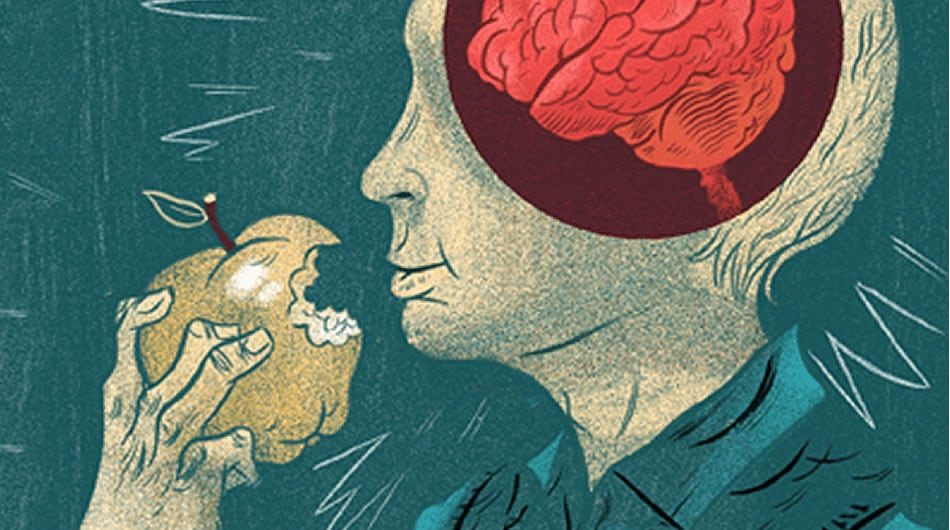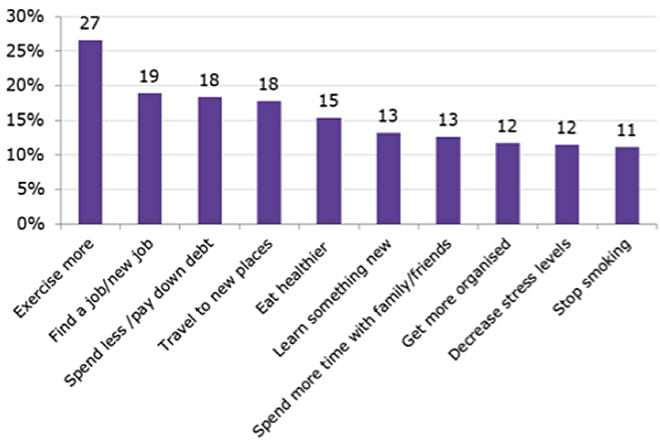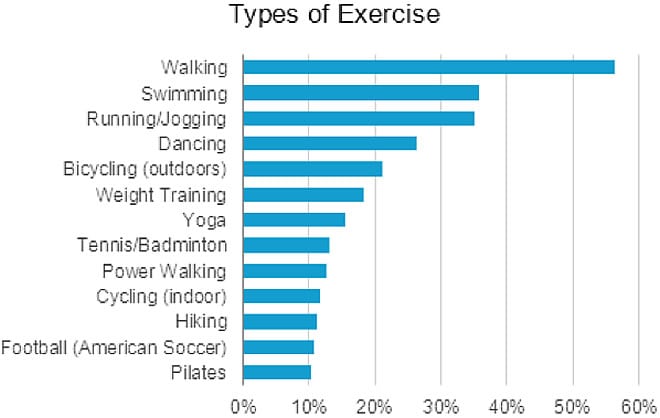So what does the future hold for our health and wellness industry? How are consumers changing? And will developments in technology help us to manage the shifting landscape of challenges we face?

Background to health and wellness
It would be a harsh cynic to say that the health of most developed nations in the world has not improved over the last one hundred years or so. More people have access to health programmes and education and most have access to healthy sources of food.
Yet ironically it is our access to this abundance of food, and the less physically taxing existence that modern living provides, that has led to the rise of obesity, coronary heart disease, cancer, stroke and diabetes. We have swapped one set of health problems for another. Rickets may be all but wiped out but growing numbers of us are getting problems with our joints for another reason.
It is also worth noting that these conditions are not equally distributed between income, gender or ethnicity.
So what does the future hold for our health and wellness industry? How are consumers changing? And will developments in technology help us to manage the shifting landscape of challenges we face?
And above all what does this mean for those businesses involved in developing products and services for the sector?
Changing consumer attitudes
We are becoming more interested in our health. Or at least certain aspects of it. Consumers are showing a greater interest in food, where it comes from, what health benefits it bestows for example. Indeed many will actively seek out those attributes when making purchase decisions. Labels such as ‘Fresh’, Organic’, ‘Better for You’, ‘Low Fat’, Low GI’ have almost become the defining nature of food rather than what the food is itself. Manufacturers collude with our concerns and develop new healthier products. Whilst marketers may re-package existing foods as ‘healthy’. The ‘healthy’ sections in the nation’s Supermarkets are now ubiquitous.

Traditionally the other side of health and wellness is about physical activity and consumers are placing it top of their new year’s resolutions. Although the regularity with which the impetus fades is supported by research by the EU commission which uncovered that physical activity is not in the top three priorities for most people when it comes to health.

Although Gym memberships remain relatively stable and appeal to a significant minority, it does seem that growing numbers are resorting to less formal forms of exercise.
Most are content to walk, jog, run, or dance, all of which require minimal equipment. Swimming and cycling are other low-maintenance activities.
Exercise for today’s consumer is in some ways about health but the more pressing matter of looking and feeling good takes precedent.
Influenced by the work of The Hartman Group, we have identified a number of consumer trends impacting Health and Wellness decisions.
- The idea of balance as an ideology will deepen. Consumers will look more for the realistic rather than the regimented.
- Trust in authority is in decline. In more and more territories consumers are turning to their own personal networks for guidance. Authenticity and honesty is a growing requirement from the products we consume.
- Consumers are increasingly looking for simplicity in a growing number of services. Product or service design that removes complexity in a process will thrive.
- The ‘Where I want, How I want, When I want’ mantra will traverse to include food, and health and wellness services.
- Access to technology will grow self-diagnosis behaviours and demand for personalisation in health and wellness services.
The personalisation aspect of a growing number of marketing strategies is in some way a response to the fact that modern consumers feel that their requirements are somehow very different to everyone else’s.
Whatever the driving factors, it is a ‘real’ need and brands need to pay attention to how they look to deliver a customised experience to their consumers.
State of the nation
Yes it’s a crisis
Obesity, diabetes and other lifestyle health issues are making themselves felt on a global level. If we do not do something we will continue to see a rapid increase in lifestyle disease and even bigger demands on the health systems.
Prevention is better than cure
Investment in ‘preventative medicine’ will come to exceed what we spend on ‘reactive medicine’. Preventative care takes many forms, from genetic testing (to determine what conditions people are likely to develop in their lifetime) to wellness and other preventative programmes. Perhaps the starkest example of where this is heading is illustrated by the dropping costs involved.
- It took $3 billion to sequence the first human genome
- By 2009, that was down to $100,000
- In 2011 it was $10,000
- It is estimated by the end of 2012 it will cost $1,000
The idea of genetically-based medicines and health and wellness programmes for EVERYONE is very much becoming a reality.
Business gets involved
“Employers determined to contain medical costs must focus on creating a culture that supports healthy behaviors. If they can do that, they can enhance not only their bottom lines but also transform the lives of their workers.” – 28 April 2012, Obesity, Fitness & Wellness Week
In many countries, already we are seeing the introduction of insurance policies based on lifestyle risks and health research and a drop in premiums for those engaged on health and fitness plans.
Technology is already here
“A new technology does not simply add something. It changes everything.” – Neil Postman
Advances in technology will very much shape the future of the Health and Wellness industry and despite the prognostications of the science fiction fraternity, much of the developments we will see in the next 10 to 15 years are with us already.
“Imagine a far more extreme transformation, in which advances in IT, biology and engineering allow us to move much of health care out of hospitals, clinics and doctors’ offices, and into our everyday lives.” – Nov 2011, Our High-tech Healthcare Future, New York Times
There is a growing deluge of new technologies that help consumers to take more of an active role in their health and wellness.
Even Smarter phones?
The Withings Wi-Fi Body Scale measures weight, BMI and fat mass, and transmits the info to a password protected site. They sell them at the Apple Store.
The GlucoDock allows users to take a blood sugar reading from the comfort of wherever, whenever.
This new iPhone accessory includes four different sensors which team up with an app. The sensors can detect temperature, humidity, radiations, and electromagnetic frequencies. Combined, the sensors and application transform the smartphone into your own medical laboratory. People who like to eat healthily will be happy to know that Lapka also tells you if the food you eat is organic or not.
This blood pressure monitor works with your smartphone. It isn’t just consumers who are rapidly adopting such technology, so are doctors and other professionals throughout the health and wellness industries
As a fitness tracker, the Nike FuelBand offers a simple, attractive product that doesn’t interfere with physical activities. Its pedometer tracks steps taken, calories burned, and a proprietary measurement of activity called Nike Fuel. The accompanying iOS app and Nike+ website offer motivational tips. There are a number of similar fitness tracking devices on the market. Allowing everyone from the beginner to the professional to monitor their progress.
The future for health and wellness
So where will we end up? Link together all these trends and the current state of the market and we know that we will witness more change in the world of healthcare, wellness and fitness in the next five years, than we have seen in the previous one hundred years.
Data aggregation and personal healthcare
According to the futurist Ray Kurzweil, within the 21st century, we will have nanobots the size of blood-cells swimming through our bloodstreams keeping us healthy by zapping cancer, correcting DNA errors, and removing toxins. We will have microchip implants that will transmit our personal health data to and from devices for our own use and that of our doctors.
Whilst the human race is not quite there yet this vision of the future is not as far away as it seems. The path to the future of health and wellness relies on massive amounts of data aggregation.
Whilst at the moment it is quite nice to be able to track your BMI and your Personal Bests when you are running, the future will rely on much more than that. The continuing fall in costs for mapping the human genome means that DNA monitoring technology for the masses is just around the corner. In the near future, your genetic profile and other biometric data will be taken into account alongside external conditions. This data will be held by your doctor and other health professionals who will be able to correlate all these different aspects to provide a truly holistic viewpoint. Completely personalized DNA relevant programmes in weight loss health and fitness can be developed to dealing with ailments.
Health goes mobile (m-Health)
Whilst the trend for mobile services of all natures is already upon us the market for mobile health (m-Health) will become even more pronounced. The market for mobile health apps is forecast to grow 70% over the next 5 years and the number of wearable wireless ‘gadgets’ will grow from 8 million to 72 million over the same period.
Indeed the notion of ‘mobile’ will no longer just relate to a device you can make a phone call through. Many of our mobile devices will either be worn as an accessory or implanted into the body. For example, scientists in Illinois, USA, have already developed an ultra-thin heart monitor that goes on like a tattoo.
The notion of the ‘Handheld Hospital’ will become reality as the mobile device becomes more diagnostic and can be directly linked to doctors and other health professionals.
So consumers can take much more control of monitoring their own health, particularly in terms of convenience. The Healthcare professional can likewise do the same. No longer are healthcare visits restricted to actual physical locations.
The gamification of health and wellness
Gamification has been capturing our attention for a while; the notion that when we take part in some sort of problem-solving exercise or competition we are more attentive.
There are a number of brands already active in the space, Nike +, Keas, Fitocracy, and Earnedit, but this is not what you would call mainstream just right now. It does demonstrate signs of benefit to both brand and consumer so do expect to see its distributing itself properly amongst the health, wellness and related industries any time soon.
Already we are seeing insurance companies offering reductions in life insurance for healthy lifestyles and improvements in fitness. In the future, this is likely to extend further along the value chain with brands and retailers offering discounts or points for healthy choices.
Wellness schemes at a corporate level will become more widespread as firms look to improve productivity. And employee rewards for good health and inter-corporate benefit schemes will hold sway.
At a community level, we are likely to see a similar reward scheme operate around access to local services. Also the introduction of health ‘leagues’ between towns, cities, villages and councils.
What does this mean for health and wellness brands?
For brands operating in the health and wellness industry, there are a number of implications.
1. Personalisation
When it comes to issues of health and wellness, consumer demand is growing for individualism. Whilst it currently only a minority who can afford or who are interested in genetically shaped services there are still areas where a more personalised service can be delivered.
The ability for brands to deliver a personalised service can come from data capture. Not just the basics of age, address and gender but the more sophisticated data generated by behaviour – both online and offline.
Brands must develop the ambition and competency to deliver content and services on a one-to-one basis.
2. Distribution
Just because a brand exists on a platform, it doesn’t mean it is fully enabled by it.
Currently, most brands are using multiple platforms. Many of them, in exactly the same way. In the future brands will need to adjust their service and content offering not just for the individual but also for the platform and context. Brands must not only be shareable they must also be portable.
Content may be king, but context is its castle.
3. Customer Partners
Customer communities are becoming increasingly important. How health and wellness brands manage that community in the future will become business critical. In return from a well-run community, brands will find a source of loyalty, advocacy, service feedback and product ideation.
Successful marketing teams of the future will be the ones who are able to start a conversation with customers and let it lead them to specific actions for the business.



